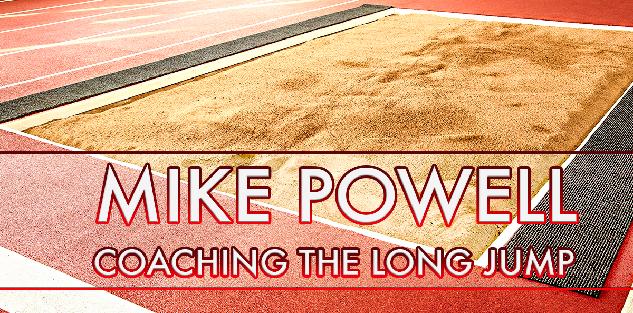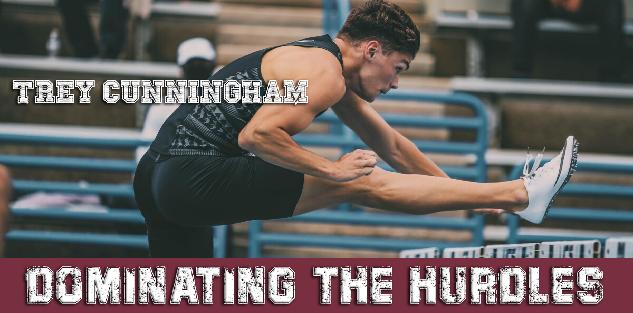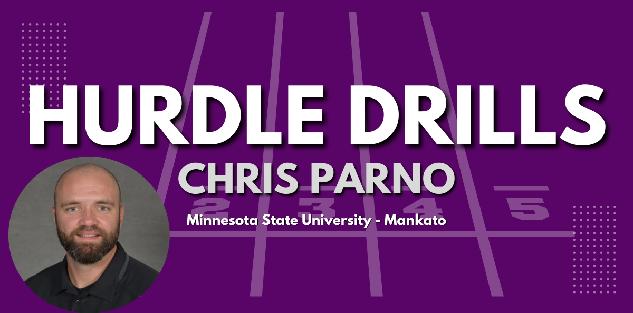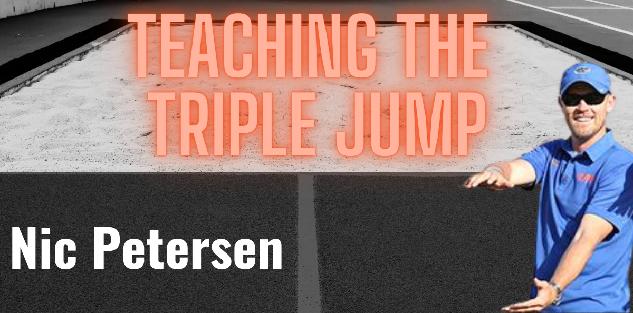Featured courses
- The Ultimate Guide to Coaching Track and Field by Jackson Chlebowy
- How TCU Coach Khadevis Robinson Builds Mental Toughness for Big 12 Track by William Markey
- Two Points of Focus When Coaching and Training Hurdles by Grant Young
- Four Keys to Maximize Winning Potential in a 400m Race by Grant Young
- Three Lessons Every Distance Running Coach Should Know by Grant Young
- Olympic Medalist Jasmine Moore’s Triple Jump Approach Technique Keys by Grant Young
- Build Strong Triple Jump Foundations with 3 Key Drills by William Markey
- Two Cues to Help With Track and Field Relay Handoffs by Grant Young
- Four Shot Put Drills to Help Develop Your Athletes by Grant Young
- Three Training Tips For Coaching 400m Runners by Grant Young
- Four Tips for Teaching the Javelin Throw by Grant Young
- 3 Pole Vault Check Points From Legendary Kansas Coach Tom Hays by Grant Young
- Two Valuable Hammer Throw Training Tips by Grant Young
- 3 Must-Try Offseason Shot Put Drills by William Markey
- Four Essential Tips For Coaching Track Relays and Sprints by Grant Young
- Florida Gators Coach Nic Petersen’s Two Keys for Teaching the Triple Jump by Grant Young
- Three Effective Drills for Improving the Long Jump by Grant Young
- Three Drills for Sprinters That Track Coaches Swear By by Grant Young
- Four Pole Vault Drills All Track and Field Coaches Should Know by Grant Young
- Explosive Track and Field Training to Level Up This Summer by Tyler Rathke
- Throwing Secrets: The Entry by Tyler Rathke
- How to Find an Endurance Athlete’s Proper Training Pace by Grant Young
- The Technique Behind Mykolas Alekna’s Discus World Record by Grant Young
- How to Build a Sprinter's Training Regimen by Grant Young
- How to Teach the Glide Shot Put by Grant Young
- Three Hurdle Drills All Track Coaches Should Know by Grant Young
- How Distance Running Coaches Can Get the Most Out of Their Athletes by Grant Young
- The Technique Behind Mondo Duplantis' Pole Vault World Record by Grant Young
- How to Coach Weightlifting For Increased Speed and Acceleration by Grant Young
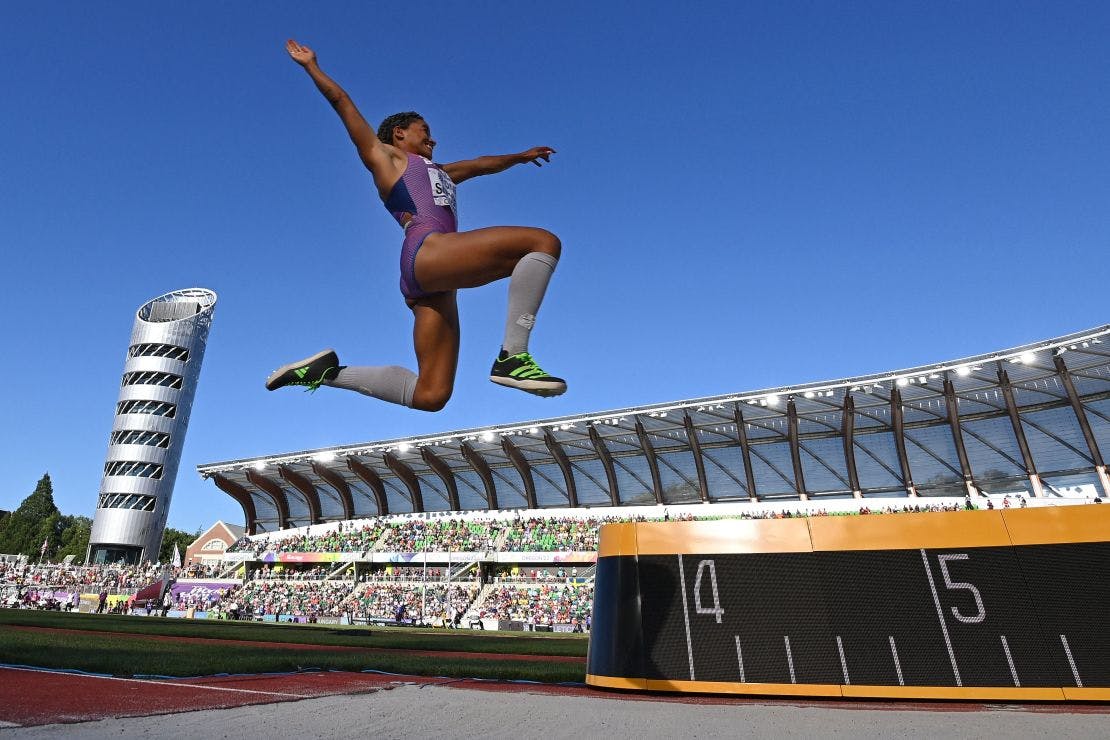
Three Effective Drills for Improving the Long Jump
- By Grant Young
Drills are essential for track athletes aiming to elevate their long jump performance because they play a critical role in developing the specific skills necessary for success in this event.
Drills are vital for building explosive power, speed, and coordination, which are key physical attributes for a strong long jump. Exercises such as bounding and plyometrics should be a part of any long jumper’s training plan because of how they enhance leg strength and explosiveness, which directly impact jump distance.
More so, drills are imperative for refining technique. The long jump comprises a sequence of intricate movements, including the approach, takeoff, flight, and landing. Breaking these down into focused drills allows athletes to perfect each phase, ensuring optimal execution.
Furthermore, drills are crucial for developing consistency and muscle memory. The repetitive nature of drills makes movements automatic during competition, allowing athletes to perform under pressure without hesitation. This muscle memory is non-negotiable for achieving peak performance.
And drills create a robust training foundation, preparing athletes not just for competitions, but also for more advanced strategies and techniques. Mastering essential drills equips athletes to tackle more complex exercises, facilitating continuous improvement.
Integrating drills into training regimens is not just beneficial — it's necessary for elevating performance in the long jump. And this is why we’ve taken three drills that renowned track and field coaches with decades of high-level experience employ with their own teams, and are sharing them with you.
Ajamu Olaniyan - Skip Flat-Flat Drill
Ajamu Olaniyan is a three-time National Champion and a seven-time All-American in the triple jump. His collegiate achievements include being in the top five all-time nationally, never being ranked lower than second in the country for five years in the triple jump. He still owns the indoor and outdoor conference records, for the triple jump, in the Wisconsin Intercollegiate Athletic Conference.
During his noteworthy coaching career, Olaniyan has worked with numerous state qualifiers and athletes who have competed at the collegiate level. He continues to coach at the college and high school level, and conducts clinics and camps in the Midwest.
In Coach Olaniyan’s ‘Key Drills for Successful Long Jump Performance’ course, he explains the Skip Flat-Flat Drill, which focuses on the transfer of horizontal momentum to vertical lift.
This drill begins with the jumper in their starting position. They’ll take one leap forward on their dominant leg (emphasizing getting vertical), land on that same dominant foot, and then transfer their weight to the other foot before exploding into a one-footed long jump.
Coaches will want to keep an eye on whether their athlete is driving both knees up on each jump, driving their arms up on the final long jump, whether their toes stay pointed outward and their heel pointed outward, and if they’re applying force into the ground after their initial jump, which will build horizontal momentum.
Justin Kinseth - The Chair
Justin Kinseth is entering his sixth season as head coach of the UW-Oshkosh men's and women's track & field teams in 2022-23.
Kinseth, the 2020 NCAA Division III Men’s Indoor Coach of the Year by the U.S. Track & Field and Cross Country Coaches Association, has helped 22 Titan men to a total of 29 indoor All-America honors and 22 Titans to a total of 33 outdoor All-American awards. Kinseth was also named the 2022 Division III North Region Men's Indoor Track & Field Coach of the Year by the USTFCCCA and helped UW-Oshkosh earn both the 2022 WIAC Men's Indoor and Outdoor Track & Field Coaching Staff of the Year honors after clinching league titles.
Justin Kinseth’s ‘Horizontal Jumps Development - Justin Kinseth’ course discloses a favorite long jump drill of his, which he calls the chair drill.
The chair drill begins with an athlete sitting on the edge of the chair (and another athlete holding the chair for them) with their knees already bent at a 90-degree angle. They will then lift their legs up before getting into their “plucking” position, which requires reaching and extending down through their legs, and will finally touch the ground with their hands at the end of each rep.
Another version of this drill can come with the chair being placed either on or right in front of the sand. The athlete will go through the same motion, and then when the ‘plucking position” arrives the player can push themselves out of their seat and onto the sand, which mimics a finish in the long jump.
Rob Assise - Galloping Single Arm Drill

Rob Assise has 17 years of experience teaching mathematics and coaching track and field at Homewood-Flossmoor High School. He has also coached football and cross country. Rob owns and operates Re-Evolution Athletics LLCT, which provides private/small group/remote training, digital products, and consultation.
Coach Assise’s ‘Feeding the Cats with Jump Drills by Rob Assise’ course includes a Galloping Single Arm drill, which is a simple yet effective (and entertaining) drill to instill good long jump mechanics.
The drill requires the athlete to gallop on a flat surface, working to swing the arm that’s opposite their jump leg. Coach Assise explains that he likes to have his athletes imagine “doing the biggest windmill dunk of all time” or “wiping a huge circle on an imaginary wall”.
Coaches are looking for a big arm circle while keeping an eye on the knee’s height on the swing side and the jump side as they work their way through the drill. These should stay below parallel to the ground, so as to not compromise the posture of the pelvis and torso.

